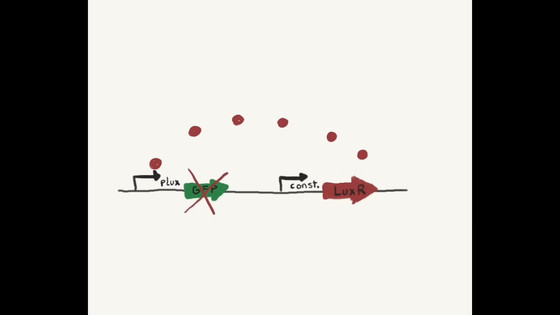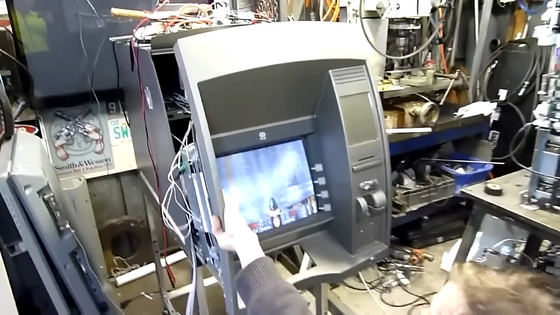Finally a fierce man who plays 'DOOM' with E. coli appears, but it takes 600 years to clear it

“Can it run Doom?” (Gut bacteria edition) | Ars Technica
https://arstechnica.com/gaming/2024/01/can-it-run-doom-gut-bacteria-edition/
Lauren Ramlan, a graduate student at the Massachusetts Institute of Technology (MIT), said that she carried out this 'DOOM' transplant as a research topic in synthetic biology. Mr. Ramlan has released the following explanatory movie.
Running Doom on cells? - YouTube
It is no exaggeration to say that modern civilization has moved hand in hand with displays, and the technology to dynamically display a large amount of information on a single screen continues to evolve.

Due to advances in technology, displays have come to be installed in various devices in recent years, but what we focused on was the ``DOOM Challenge'', which aims to ``display DOOM play on the displays of various electronic devices.'' 'is. Challenges range from displaying DOOM play movies to actually running DOOM programs on electronic devices and making them playable.

DOOM Challenge first became famous as an unofficial port to the Nintendo DS in 2006.

After that, DOOM challenges for electronic devices that are not game consoles will be announced one after another on the Internet. This is how DOOM is running on a scientific calculator.


In July 2023, an attempt to `

However, Ramlan said of the study published in July 2023, ``This is playing DOOM using neurons as a controller, and is different from the DOOM Challenge.'' Therefore, Mr. Ramlan started a project to apply the synthetic biology that he is researching and achieve the DOOM challenge using cells.

The project name is ``Encoding 1-bit pixels on displays for interactive digital media with E. coli''

On a display, the screen is divided into the smallest units called 'pixels' and the image is displayed by setting the color and brightness for each pixel. Mr. Ramlan envisioned a monochrome display in which each pixel could be set to white (0) or black (1), and adopted the idea of using E. coli's luminescence to display this pixel.

The E. coli plasmid (circular DNA) used for display contains a gene that expresses

Looking at

E. coli is cultured in a culture plate with 48 horizontal holes and 32 vertical holes, and each hole is controlled individually. In other words, the resolution of this E. coli display is 48 x 32 pixels. Mr. Ramlan calculated the gene expression rate and the concentration of AHL molecules in the medium, programmed it in Python, and built a system that compressed and displayed the DOOM play screen to 48 x 32 pixels. Below is the DOOM title screen compressed to 48 x 32 pixels.

And below is this screen displayed on the E. coli display.

This is a compressed version of the gameplay screen.

When displayed using the luminescence of E. coli, the screen looks like this. Since the presence or absence of light emission is directly linked to the pixel display, there is no contrast information, and the information needed to play the game is almost impossible to read. Still, I succeeded in the challenge of ``displaying the DOOM screen with E. coli''.

However, according to Mr. Ramlan, it takes about 8.3 hours for E. coli that has emitted fluorescence to stop emitting light, so if you calculate the refresh rate of the E. coli display, it will be about 0.00003Hz, which is more comfortable than the display resolution. It's almost impossible to play. Mr. Ramlan revealed the calculation result that if you played DOOM to the end on this system, it would take about 600 years, and commented, ``All you need to run ``DOOM'' is a screen and the power of will.'' doing.

Related Posts:








